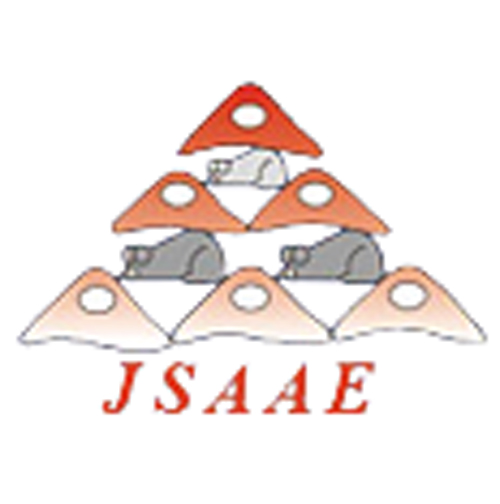Contents
FOR THE FIRST ISSUE OF THE JOURNAL
Tsutomu SUGAHARA
President of the Japanese Society of Alternatives to Animal Experiments
AATEX 1(1):1
In the latter half of the 20th century, remarkable progress in biomedical research has come at the expense of a large number of experimental animals. For such situations, a new research front for alternatives to animal testing has been developed in Europe and the United States during the past two decades. In Japan, a small group of scientists interested in this field was organized for the first time in 1984. Growing rapidly. This group has published a newsletter since 1985 and provided research grants supported by private donations since 1985 totaling Y 18,450,000 in 5 years. The Japanese Society for Alternatives to Animal Experiments was organized in November 1989. The aims of the research are symbolized by the 3R’s of Russell and Burch, 1959 as in other countries, i.e., Replacement, Reduction and Refinement of animal experiments. The Japanese Society is still small and a newcomer among developed countries. But recognizing the international importance of the research field in biomedical research, the Society decided published its official journal on an international basis with international editorial board. The organization for editorial work and management of the Journal is still under development but the Society has decided to publish the first issue of the Journal with the cooperation of our colleagues abroad as editorial staffs, contributors and subscribers. In the next issue I would like to announce the name and address of three or four of the editors who are responsible for selecting papers after their peer review systems.
Finally. I would like to acknowledge the financial support of the Health Foundation, Kyoto and others to the society by which the publication of the present made feasible. Further donations organizations to support the publication of the Journal would be Research Society by Issue Was by any continued very much appreciated. The names of the organization supporting the Society is shown as acknowledgments in the last page in this journal.
November. 1, 1990
In vitro cytotoxicity test using rabbit conjunctiva, rabbit cornea and HeLa cells as alternatives for the Draize eye irritation test
Tadashi OKUBO1, Keiko HIRAIWA1, shigemi KINOSHITA1 and Masami WATANABE2
1Research Laboratory, POLA Corporation, 27-1 Takashimadai Kanagawa-ku Yokohama221, Japan.
2Division of Radiation Biology, School of Medicine, Yokohama City University, 3-9 Fukuura, Kanagawa-ku Yokohama 236, Japan.
AATEX 1(1):2-9
Abstract
In vitro cytotoxicities of 7 detergents, 5 shampoos and 3 rinses were determined on the basis of the colony forming abilities of three types of cells, primary rabbit conjunctiva1 (RCN) cells, corneal (RC) cells and established HeLa cells. We compared the cytotoxicities of each cell type in vitro and the Draize eye irritation test in vivo , and compared the cytotoxicities among three types of cells. There was a good correlation between the cytotoxicities of each cells in vivo and the Draize score in vivo, and a correlation among three types of cells. The same sensitivities among the three types of cells were observed. These data suggest that, using either RCN, RC or HeLa cells, the cytotoxicity test in vitro may be useful as a substitute for the Draize eye irritation test.
Differences in effects of rotenone on insert cell lines
Yoshihiro YANAGIMOTO, Kimihiko SATO and dun MITSUHASHI
Faculty of Agriculture, Tokyo University of Agriculture and Technology, Fuchu, Tokyo 183, Japan
AATEX 1(1):10-19
Abstract
Growth of insect cells in vitro was inhibited by addition of rotenone to culture media. The rate of inhibition did not vary in cell lines originating from the same tissue of the same species. However, there were great differences between cell lines derived from different species or different tissues. Among the tested cell lines, the ones from Mamestra brassicae ovaries were most sensitive and the ones from M. brassicae hemocytes were most insensitive to rotenone. Respiratory rate did not vary in cell lines from the same species regardless of the original tissues. However, it varied considerably between cell lines from different species. The flucturation in rates of respiratory inhibition by rotenone showed a tendency similar to that in the rates of growth inhibition.
Application of Normal Human Epidermal Keratinocytes in Serum-Free Medium as an Alternative to the Draize Occular Irritating Test
Hisashi TORISHIMA1, Hirokuni ARAKAWA1, Shigeaki MATSUI2, and Masami WATANABE3
1Technical Research Laboratory, Kurabo Industries LTD, Neyagawa, Osaka 572, Japan
2Biomedical Business Project, New Business Promotion Dept, Kurabo industries L/TD, Neyagawa, Osaka 572, Japan
3Division of Radiation Biology, School of Medicine, Yokohama City University, Kanazawa-ku, Yokohama 236, Japan
AATEX 1(1):20-26
Abstract
Normal human epidermal keratinocytes grown in a serum-free keratinocyte growth medium were evaluated as an in vitro alternative to the Draize ocular irritation test. The cells were cultured in 96-we11 tissue culture plates and treated with test agents. Cytotoxicity of the agent was estimated by the uptake of neutral red by viable cells. Fifty-one chemicals which are used in cosmetics were employed as test agents. The correlation coefficient between in vivo Draize score and in vitro test with normal human epidermal keratinocytes was 0.83. In addition, the method using normal human epidermal keratinocytes was more sensitive to a given concentration of test agents than the colony forming assay using rabbit cornea primary cells. These results suggested that the cytotoxicity test in vitro using normal human epidermal keratinocytes is useful as an alternative to the ocular irritating test.
Proceeding
Abstract of the Third Annual Meeting of the Japanese Association of Alternative Research to Animal Experiments(JSAAE), Yokohama, October 23-24, 1989
(pp. 27-56)

